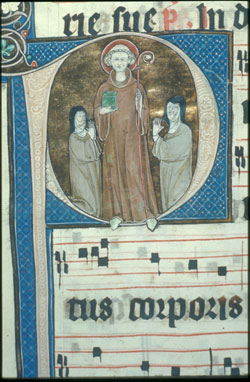 |
 |
 |
 |
 |
 |
 |
|
What did it mean to be Cistercian? (3/19) The Cistercian General Chapter was at first reluctant to embrace female religious communities and to recognise women as an integral part of the Order. In the early thirteenth century it was forced to review this position and for a brief period incorporated female communities within the Cistercian family. This meant that a number of nunneries across Europe were now officially recognised by the General Chapter. Still, there were many more that claimed a Cistercian identity or were described as such by outsiders. Communities that claimed to be Cistercian may simply have followed the customs of the Order; the nuns may have adopted the distinctive Cistercian habit of undyed wool or claimed privileges granted to the Order, such as exemption from the payment of tithes. Accordingly, there was, on the one hand, a group of nunneries that had been formally sanctioned by the Cistercian Order and, on the other, a larger group of communities that claimed to be Cistercian or were described by others as such, yet were not officially recognised by the General Chapter of Cîteaux.
In England, for example, whilst some twenty-five to thirty nunneries were defined as Cistercian only two – Tarrant Kaines (Dorset) and Marham (Norfolk) - were fully incorporated. In other words, only these two communities were formally recognised by the Order as belonging to the Cistercian Order and subject to the jurisdiction of the General Chapter. Whereas Tarrant and Marham were abbeys and presided over by abbesses, the others were ruled by a prioress. There was not, however, a clear-cut division between official and unofficial nunneries, but rather varying degrees of acceptance. Some communities were not sanctioned by the Order yet were actually quite well accepted; moreover, their way of life may not have been significantly different to the daily routine of those who belonged to fully incorporated houses. The latter is the subject of current historical research.(5) There were thus various ways in which a community could claim to be Cistercian or was described as such. There were different perceptions of what it meant to belong to the Order, ranging from the community that had been sanctioned by the General Chapter and was fully incorporated, to that which called itself Cistercian but was not recognised by the Order, may not have adopted the Cistercian habit or followed what the Order considered to be the Cistercian way of life. |
|||
|
